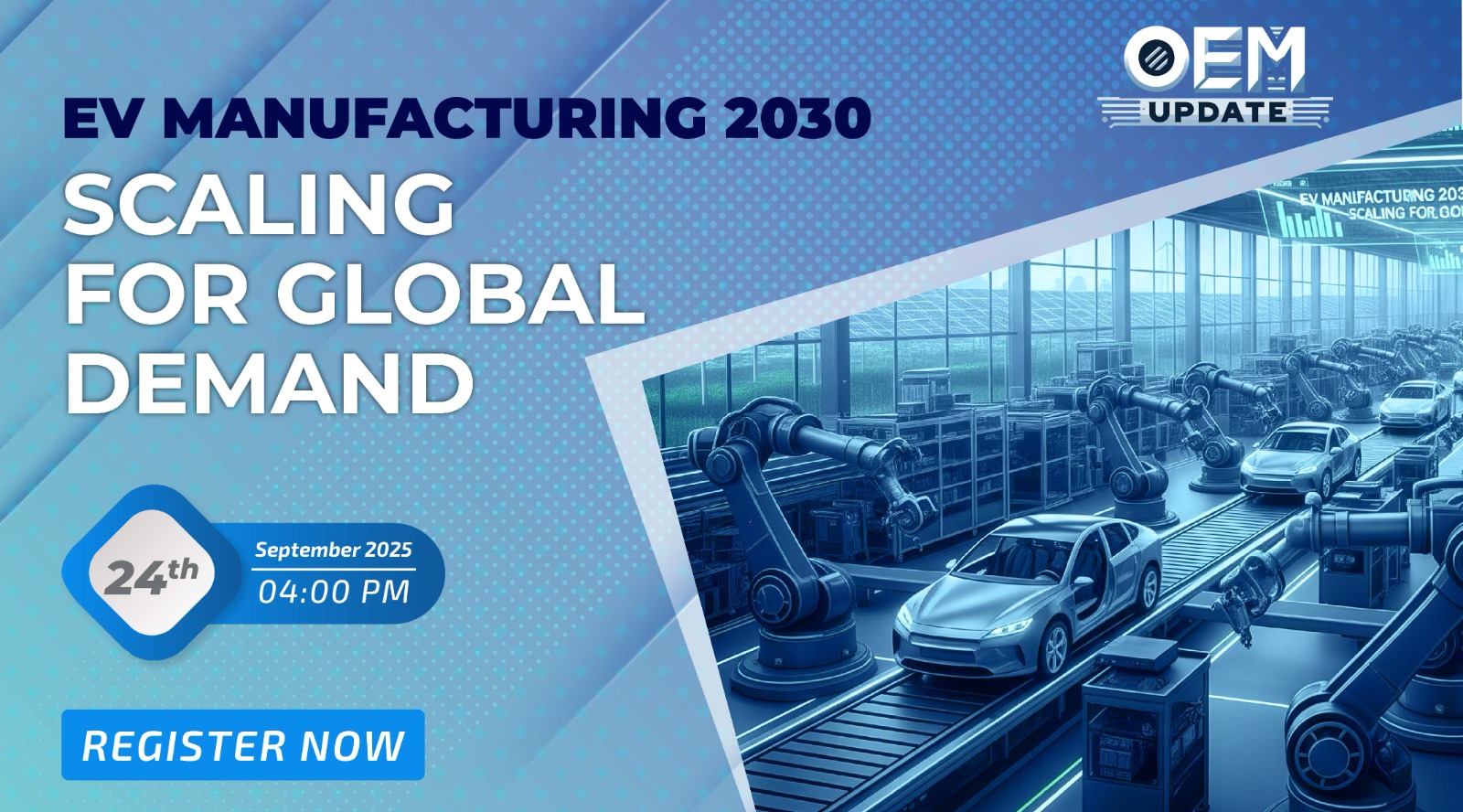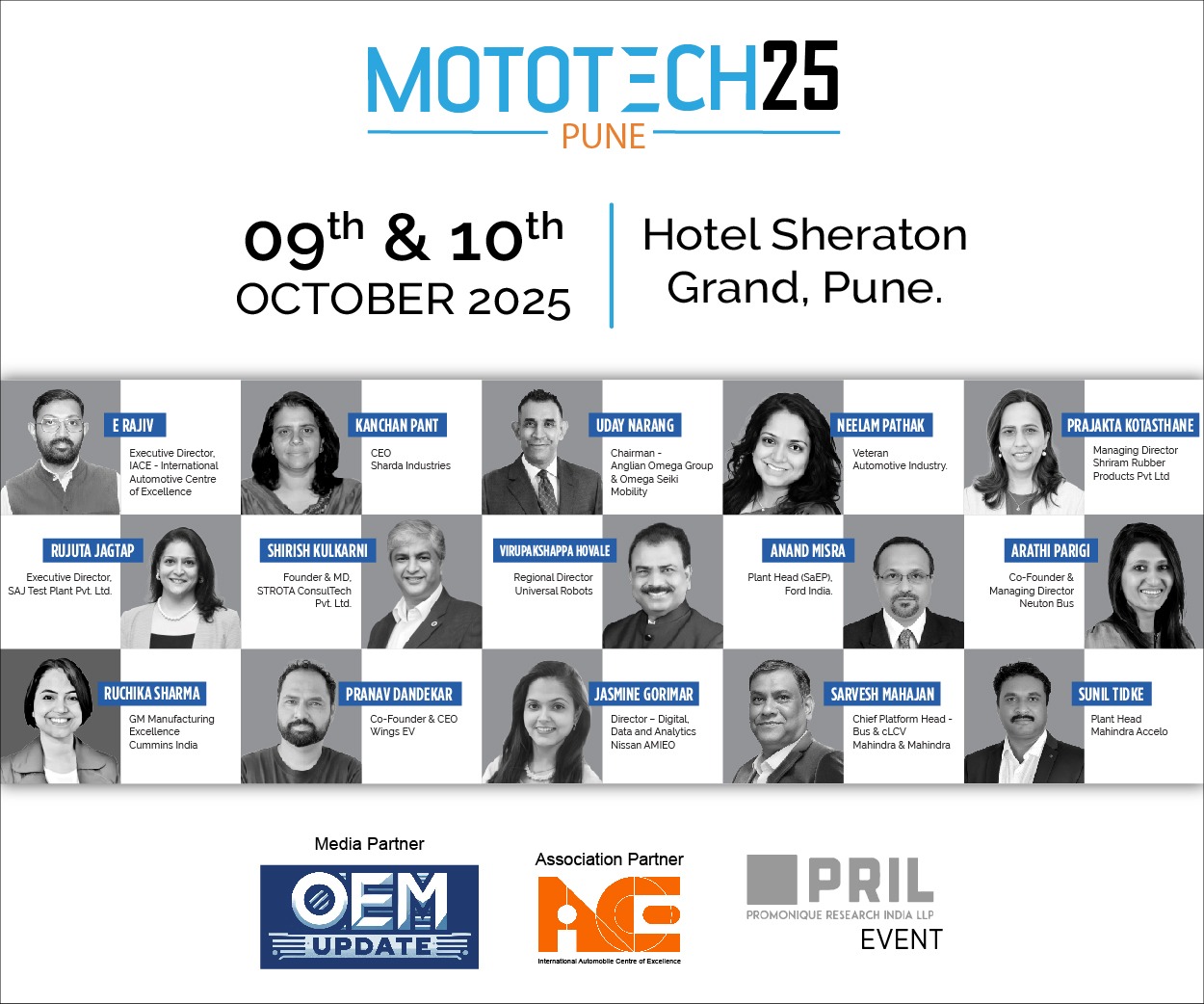Choosing the right HVAC solution
By OEM Update Editorial April 13, 2019 12:39 pm IST
Considering the load profile of the building based its actual location is essential while selecting HVAC solutions, says Frank Taaning Grundholm, Vice President – Global HVACR Sales – Drives, ABB, in an interaction with Aultrin Vijay of OEM Update.
What products have you launched at ACREX 2019 and what are your expectations?
We’ve launched our new product series of Variable Frequency Drives (VFD) at ACREX for the HVAC&R market. We’re replacing our legacy products, which have now been in the market for about 10 to 15 years. So, we’re now introducing latest technology with wireless communication capability, also with much more clean power supplies with our active front-end drives, which we call ultra-low harmonic drives, thereby creating a more sustainable environment inside the buildings.
Also, we had smoke extract motors on display as well as our ABB AbilityTM digital offering where we can take all the data from the whole electrical system into our global cloud system and then do condition monitoring and predictive maintenance.
Lot of data is being handled in cloud system. How safe is it?
Well, it’s a lot of data and there’s lot of concerns about security when you talk about sharing data outside of a building. But, we’re basing our systems on the global platform — Microsoft Azure — which is at large a safe platform. So, rather than building a proprietary solution, we have partnered with Hewlett Packard Enterprise and Microsoft to secure our backend. And then, we build the front-end layer towards the customers to integrate easily and seamlessly with the ABB product range.
What are the latest products/technologies/solutions in ABB’s stable right now for HVAC?
Most of the manufacturers have a low tier micro-drive offering and a premium offering, which might create confusion for the customer because the interfaces are not similar. So, you have to learn two different drives even though it’s from the same manufacturer. However, we’ve taken a different approach. We’ve created one holistic offering where we’ve removed specific parts of the hardware to reduce cost, and created the same kind of interface having the same functionalities as the rest of our HVAC&R platform. So, we can interface with the legacy RS-485-based systems, BACnet MS/TP, and Ethernet-based systems.
What are your suggestions to improving productivity and efficiency in HVAC systems?
One of the things that we’ve observed is that a lot of customers are setting out requirements for efficiency. And, that’s a good thing. Absolutely! High efficiency products are necessary in the market. Unfortunately, these efficiency requirements are set at full load. But, when you look at traditional HVAC systems, most of them operate 99 per cent of the time at 80 per cent load or less. But, nobody specifies the efficiency at part load. So, we’re actually working with the community on how we can improve specifications to achieve the energy savings that the customers expect. When the part load efficiency is significantly lower you will never realise the savings that you had calculated. That’s why, when selecting solutions, it’s necessary to look at the load profile of the building based on its actual location.
I’m from Denmark. If you take a load profile from Denmark and apply that on a project in India, the actual results are going to be very different. So it needs to be a local relevant profile that we’re looking at and then calculate the energy usage at the relevant load points. This way, the solutions become comparable.
Some of the solutions have a drawback. When you run at part load you don’t get that full efficiency. And, that is related to the motor design and motor controls. We spend a lot of research in securing that we have high efficiency operation of our motors and drives even at part load. When you have a relatively flat efficiency curve and use high quality components, then the price comparison doesn’t fit at an initial cost perspective. However, if you look at the lifecycle of a building and the sustainability of a project, it is relevant. And, it is value that we are adding, because most of the time you’re operating at part load and you need the high efficiency at part load condition as well. Some of the new standards are also looking at motor efficiency when operated on variable speed. The traditional motor standard has been at full load efficiency point and that’s what most manufacturers are stating, which is also correct. However, there are variable speed standards now available, where you can look at what your efficiency is over a total speed profile.
Our traditional HVAC systems were focused on cooling the air instead of purifying it. Now, with the rise in pollution quality of air is now a major consideration. What’s your view on this?
If you have pollution outside and you don’t do anything, then you’re going to have pollution inside when you ventilate the building. And, if you don’t ventilate the building you’ll still have air pollution — CO2 pollution. We do need ventilation, but we need to apply the relevant filtering so that we can prevent the particles from entering the building. That also means that we need more automation, because we need to monitor the filters from getting clogged up. If there’s a clogged filter you don’t get any actual air in and you also use too much energy. So we need to make sure that filters get replaced at the right time. That`s something we’re integrating into our drives where we can get information about the filter clogging and then alert the customers when it’s time to change.
How do you optimise the functioning of refrigerator or cold storage?
In the cold storage, you need to consider the whole system to optimise it. In a refrigerator, if you start controlling the condenser, it will affect the compressor. That also has an impact on the evaporator. So, you need to take a system approach and create the right balance between how you control the compressor, condenser and evaporator in combination. If you have a very large cold storage, one of the easy ways of getting energy saving from the evaporator side is to monitor how full your storage room actually is. Typically, they are palette-sized and sometimes they’re only half-full. There’s no reason to cool the door. If it’s an empty space the temperature doesn’t matter. You could monitor the cold store and fill it from the back towards the front. That way you can actually control how far you throw the cold air. That’s an opportunity for saving. But, of course, you don’t pull as much cooling from the evaporator. You need to do more capacity control on your compressor side where it`s necessary to create a balance between the speeds on the compressor relative to staging it on/off. If you stage off a compressor it uses no energy. But, sometimes, running two compressors at part load is more efficient than running one compressor at full load and another at part load. That’s where you need to do a monitoring of the staging points for the compressor and then optimise it based on that.
What are your offerings for Indian and global market?
India is becoming a more mature market. I started coming to India about 20 years ago. At that time IP20 units was being installed on the roof, which is not supposed to happen with electronics, especially not in this environment. As the market has matured, the installations have also become more professional by following the industry guidelines.
Now, we’re also seeing a much higher maturity on digitalisation. We had a lot of good dialogues at ACREX with some of the OEMs. They want to learn more about the individual components of the system, so that they can advise their customers in advance before things fail. We have service people to help when the units need service. Since distances and transportation time are an issue in India, we need to be able to predict failure before it happens, so that we can assign people to be available on site when there’s an issue.
Where, according to you, India stands in terms of implementing IIoT?
I think it’s a beginning market. Infrastructure has been a problem, but lot of investments are being made on infrastructure. Data centres are being built to support that infrastructure. So, I think we’re seeing an acceleration of that implementation. Even in Europe there are a lot of countries, which are a bit more mature than India to some extent, where the infrastructure investments are not being made to the same level. So I have an expectation that India, in the next couple of years, will surpass some of the European countries in terms of IoT, because the infrastructure will be there to support it.
What’s your view on incentive programmes for HVAC industry?
In all countries where government starts initiating incentive programmes, it does increase the investments in energy savings. We’ve seen the Indian government providing incentives for solar, which of course helps fuel the economy around solar in India. Similarly, in other industries, incentive programmes will have the same effect. But, the other part is that rules should be in place as to how things need to be done.
India is a cost sensitive market. Instead of buying a high quality product, which is comparatively more expensive, they go for least efficient ones with lesser price. What needs to be done?
Of course, it’s partly on us, as a manufacturer, to communicate to the OEMs what the added value is and how we can help them save cost. Sometimes we see drives, even premium drives, being installed, which have lot of capabilities, but they’re used as a simple speed actuator. Then right next to it there is a PLC, which actually runs the machine. But, the “brains” of the drive could actually have done everything that the PLC does. So, it’s also a matter of trying to work with the manufacturers to see how we can leverage the full capabilities of the components they already have.
I have an expectation that India, in the next couple of years, will surpass some of the European countries in terms of IoT
Frank Taaning Grundholm, Vice President – Global HVACR Sales – Drives, ABB
Cookie Consent
We use cookies to personalize your experience. By continuing to visit this website you agree to our Terms & Conditions, Privacy Policy and Cookie Policy.
















